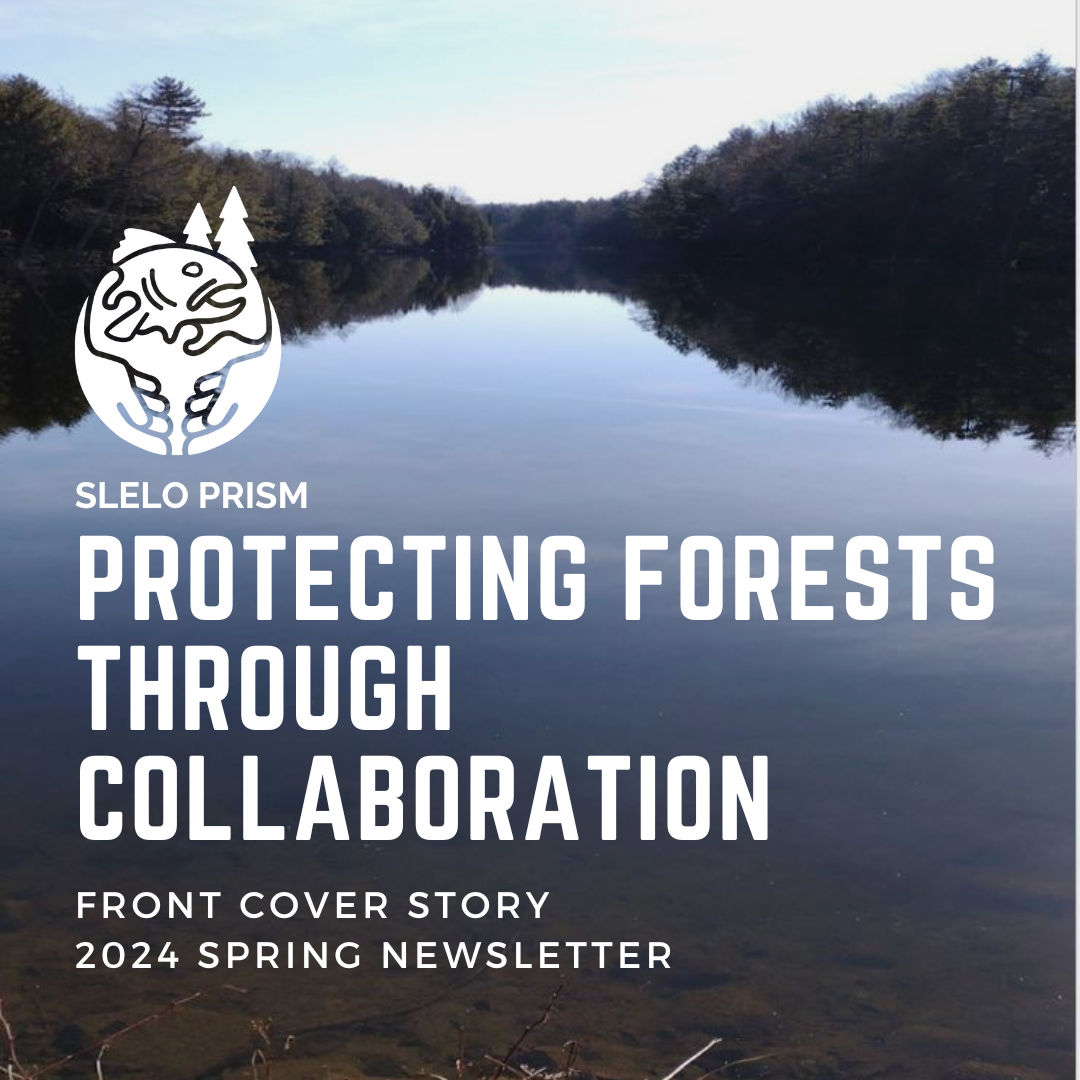This article was featured in the 2024 Spring Newsletter by Robert Smith-SLELO PRISM.
The St. Lawrence and Eastern Lake Ontario (SLELO) Region lies within the largest temperate deciduous forest in the world. This extends along the Appalachian Mountain range from Alabama through New York and into Nova Scotia, representing a pathway corridor for native species that must move long distances to find suitable habitat as climate changes. In the five-county SLELO region, there are nearly 2 million acres of forested land with additional acreage in urban forests. Invasive forest pests and tree diseases currently affecting the SLELO region, and those soon to arrive, can reduce the ability of our forested lands to store carbon which further worsens climate change, and the ability of wildlife to move through this corridor.
A recent study showed forest plots damaged by insect pests stored 69% less carbon than less disturbed plots and plots recently impacted by disease stored about 28% less carbon (Quirion et al 2021). SLELO’s efforts to slow the spread of forest pests and pathogens is a key strategy for enhancing the resilience of our forested areas against a changing climate and invasive species.
Current forest pests of concern include emerald ash borer (EAB), hemlock woolly adelgid (HWA), beech leaf disease (BLD), and elm zigzag sawfly (EZS). Forest pests close to our area include spotted lanternfly (SLF) and invasive long-horned beetle (LB). Key steps that we take to limit the spread of these species are Prevention, Early Detection/Rapid Response, and Invasive Species Management.
Prevention involves raising awareness of existing and approaching forest pests in our region and showcasing prevention and control methods. Some way in which we accomplish this is by sharing information with other agencies involved with forest pests, and by hosting informative events for the public.
Early Detection/Rapid Response involves identifying new forest pest arrivals when they are in low abundance and then applying appropriate management techniques aimed to reduce the ability of the identified population to become widespread. Invasive species management involves eradicating, containing, or suppressing invasive species depending on their current population (tier) level. Methods of management include manual/mechanical, chemical, and/or biocontrol methods (integrated pest management). These efforts can be complemented by restoration that returns native plant assemblages to the site- strengthening the health of the applied ecosystem. These steps will help maintain the resiliency of our forests if we work together to make them happen.
This is a collaborative effort among our team, partnership, and the public. Alone, none of us can survey for and manage every invasive pest found in our region, but together, we can get this job done!
Please fill out the form below to be added to our listserv and receive our seasonal newsletter, event invitations and other announcements.


